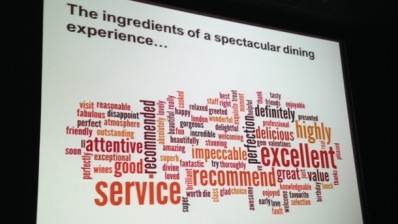ASK THE EXPERTS
How to create a Single Customer View

Knowing what customers want, like and need is incredibly important in any sector, but especially in hospitality where I’ve been told by clients that one loyal customer is worth 12 ordinary customers.
Step 1: Get your data ducks in a row
The first step towards achieving a SCV is to collate and understand the information you can already access. Look at your data sources and ensure that all feeds are accessible and can be organised and analysed.
Make sure the data you’re organising will help you achieve your aims. Do you want analytics to give you insight into customer behaviour or help you develop personalised content? Perhaps you want both. Having goals in mind enables you to isolate the most useful data and ignore the rest. It also helps reveal any important data that’s missing.
Think too about the amount of data you hold, how often it is gathered and how far back you should delve into customer records. Five years of data can overwhelm, but six to 12 months of information may provide a more relevant picture of current customers.
Use your common sense and set some parameters to get a good database in place.
Step 2: Separate the wheat from the chaff
While weighing up your data ‘gold’, think about the customer journey and the process through which the information has been acquired. How can the information gleaned at different points help you add value or encourage customer loyalty?
This combination of analytics and offline analysis will paint a good picture of the customer’s journey and reveal key touch-points through which you can engage. This information is normally marketing data that’s been gathered during a visit, purchase or transaction, or online information gained through a marketing preference centre.
Step 3: Remember the three 'P's - personal preference pays
With the customer identified, it’s time to address the individual’s needs in order to maximise revenue. That means presenting the right meal, weekend break or drinks promo at the right time to the right customers in the right way.
The SCV enables you to deliver truly personal 1-2-1 cross-channel customer engagement, whether via mobile, direct mail, email or social, in the same way you interact directly with a customer on the dining room floor or in a hotel lobby.
Speak to customers naturally and reach out to them through their preferred communications mediums to build trust and loyalty. However, if you engage with them in the wrong ways and at the wrong times you’ll risk losing them forever.
In the digital era, there’s no longer an excuse for fingers-crossed, law of averages mass untargeted email campaigns. With the SCV you can get inside the customer’s brain and find out what really makes them tick.
This gives marketers the opportunity to surprise and delight with personalised engagement and memorable experiences, increasing loyalty, boosting promoter scores and bolstering revenue and profits as a consequence – one leading hospitality chain we worked with used an SCV to increase transactional spending by 30 per cent.



















